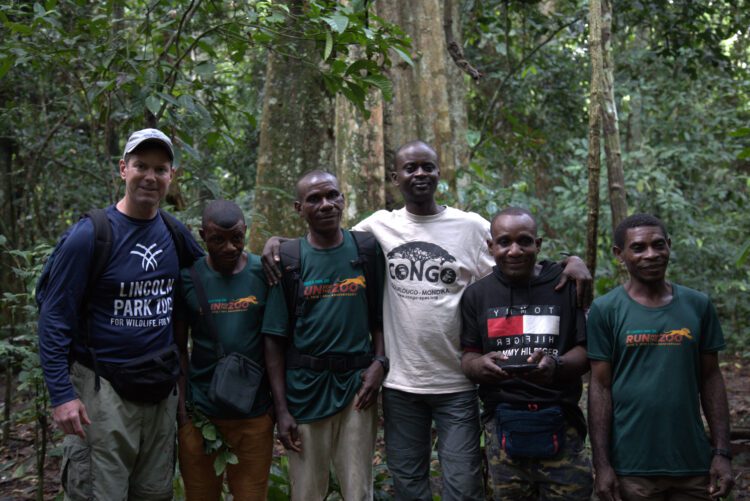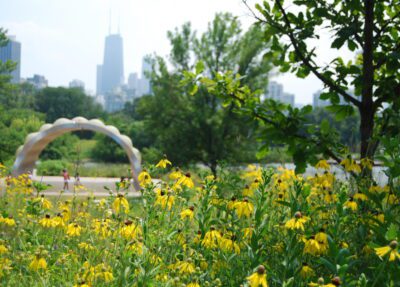Diving Deeper: Goualougo Triangle Ape Project, Part IX
Although nearly 7,000 miles physically separate the Goualougo Triangle and Chicago, there are numerous threads tying the two locations together. The hard work of field scientists, research assistants, and trackers in the Congolese park is complemented and built upon by their colleagues here at Lincoln Park Zoo.
The Goualougo Triangle Ape Project (GTAP) and Lincoln Park Zoo are also connected through guiding principles, both in how we work with wildlife and how we work with people. GTAP, which is co-directed by Lincoln Park Zoo Research Fellow David Morgan, Ph.D., takes after the zoo in prioritizing animal care and welfare simultaneously with positive experiences and opportunities for humans connected to, impacted by, and interested in conservation efforts. This shared approach ensures that no matter how far apart GTAP and Lincoln Park Zoo are by distance, the two will always be working collaboratively toward shared goals.
Making Data-Driven Decisions
In many ways, the scientists and animal experts in the Goualougo Triangle and back at Lincoln Park Zoo are coworkers just like any officemates. The two teams are regularly checking in with each other and sharing their findings to better care for great apes all over the world.
“Collaboration is important. It allows us [at GTAP] to compare the behavior of gorillas in the wild with those in the zoo,” research assistant Fabrice Thierri Ebombi said. “Lincoln Park Zoo workers can see how a gorilla or chimpanzee behaves in its natural environment, which helps them to better understand the animals.”
Findings from the Goualougo Triangle have a direct impact on the great apes here at Lincoln Park Zoo. For instance, data collected through GTAP was referenced in the design of Regenstein Center for African Apes. On a trip to the zoo, you might see chimpanzees using tools at imitation termite mounds in their habitat, just like the tool usage recorded on field cameras in the Goualougo Triangle. Or perhaps you’ll spot a gorilla building a nest atop one of the raised platforms in their habitat, similar to the nests observed by researchers in the forests of Nouabalé-Ndoki National Park. You’ll even find Mondika and Djeke, two western lowland gorilla males who were born at the zoo and named in honor of important GTAP research sites.
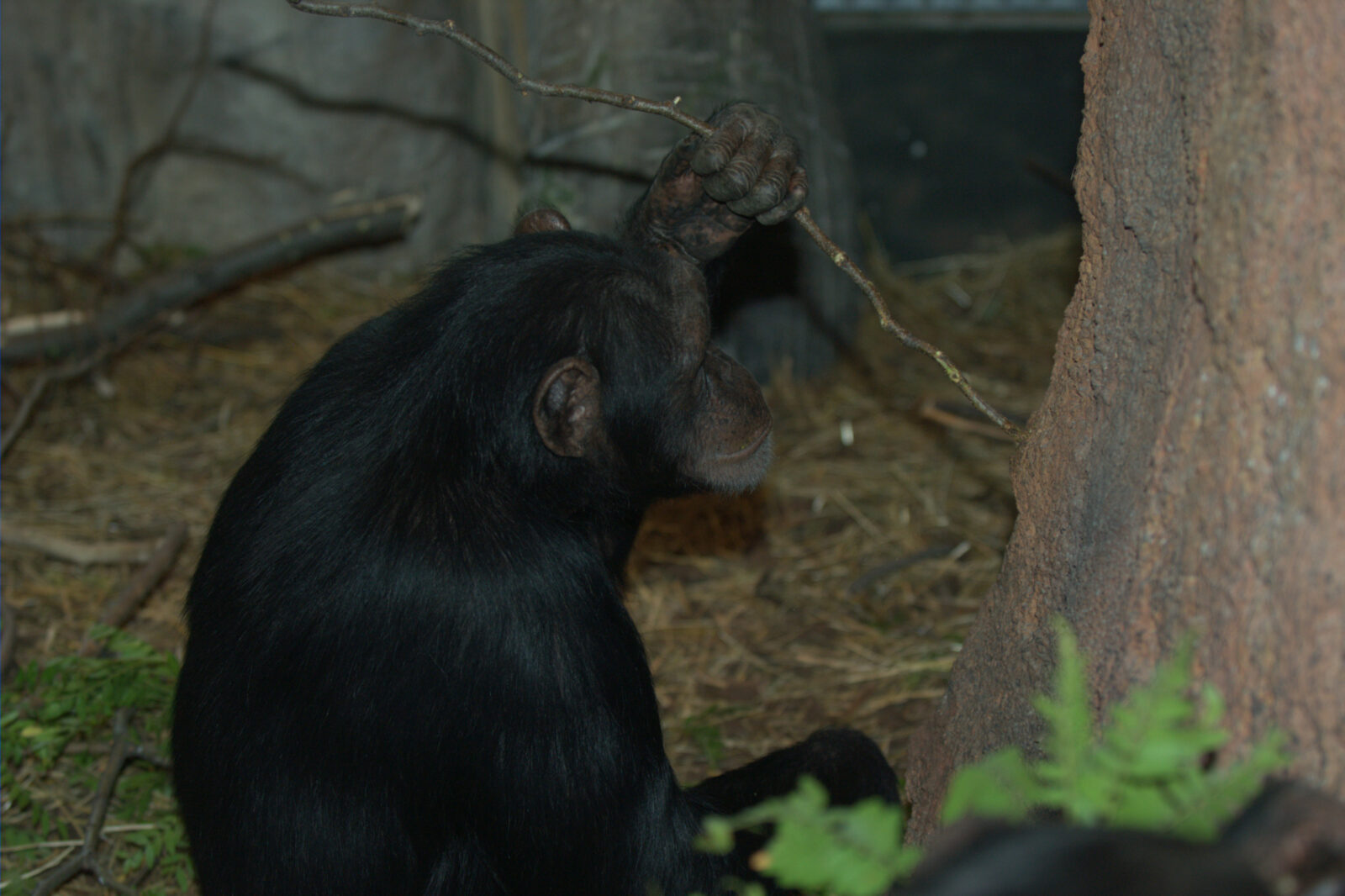
Scientists at Lincoln Park Zoo also maintain a database of health information from wild great apes all over the world, and they add information about Congolese gorillas and chimpanzees as it comes in from GTAP. Combined with information from sites like Gombe National Park in Tanzania and Dzanga-Sangha Bai Hokou in the Central African Republic, this overarching database helps paint a clearer picture of an individual ape’s health over time. It also allows for comparison between the health of gorillas and chimpanzees across sites, which plays an important role in global conservation advocacy.
Knowledge Sharing Across Continents
Researchers at GTAP and Lincoln Park Zoo also manage the Goualougo Video Analysis Lab together. Trackers in the Congo can spend up to 30 days in a row tracing the movements of great apes and placing dozens of motion-activated field cameras in high traffic areas of the forest. These cameras record ape behavior and tool use without requiring direct human interaction with the animals. From there, the treasure trove of footage is sent over to the Chicago-based lab for assessment by researchers at the zoo’s Lester E. Fisher Center for the Study and Conservation of Apes.
At the zoo, researchers review the videos to identify different apes, observe how they interact with each other and the world around them, and study different examples of tool usage by apes in the wild. By working together, the teams at both sites can get a better idea of what life looks like for chimpanzees and gorillas living in the untouched forests of Nouabalé-Ndoki National Park.
Morgan, along with GTAP researchers, is also regularly sending data back to the Fisher Center for analysis. When possible, similar tests are conducted on the great apes of Goualougo Triangle and those at Lincoln Park Zoo to get a clearer idea of their similarities. For instance, samples of fecal waste and saliva on discarded fruit scraps were noninvasively collected from gorillas and chimpanzees in the Nouabalé-Ndoki National Park and sent back to Chicago for analysis. Gorillas and chimpanzees at the zoo also voluntarily participated in similar research. By having samples from both groups, researchers garner a clearer understanding of the lived experiences of great apes, and in turn can make better informed decisions on the care, welfare, and conservation of the animals.
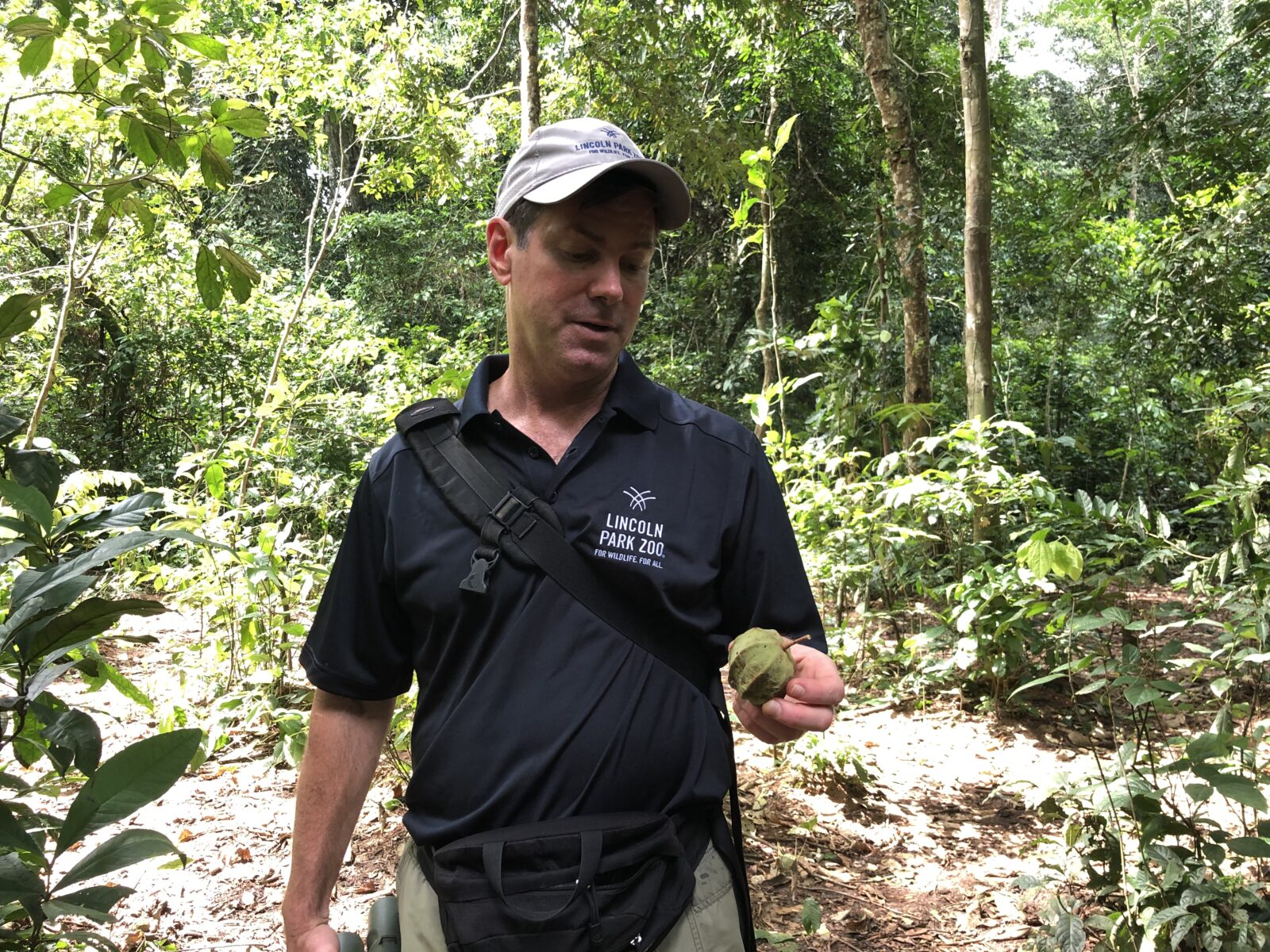
Working Toward a Brighter Future
At Lincoln Park Zoo and in the Goualougo Triangle, education is a key initiative. By prioritizing learning opportunities for children, we can inspire the next generation of animal experts and create a future where citizens across the world care deeply about conservation efforts.
In the Congo, Club Ebobo was started as a form of community outreach in 1997. In the years following, it has grown into a monthly education program that teaches local children about the importance of native wildlife living in the forests around them—including great apes—and the conservation efforts that go into protecting these plants and animals. The club is now active in three towns surrounding the Nouabalé-Ndoki National Park, with more than 800 students from ages 6 to 20 participating each month.
Club Ebobo makes conservation work fun, with lessons presented in creative ways. Children learn through music, art-making, play, and other interactive methods. After more than 25 years, Club Ebobo is starting to see some of its former students, including those whose fathers also worked with GTAP, graduate into research positions of their own.
“Many of these trackers, now their sons are involved, now their brothers are involved,” Morgan said. “It’s extremely gratifying to see.”
Back in Chicago, Lincoln Park Zoo is also inspiring future animal experts and giving Chicagoland children the opportunity to learn from professional researchers and scientists. Programs like the Malott Family R.O.A.R. Corps teach students about conservation topics using interactive activities, challenges, and chats with zoo experts. Meanwhile, the Conservation Ambassadors Board encourages teens to learn about the zoo’s conservation initiatives—like GTAP—and empowers them to plan projects that educate others about this important work being done across the globe. Just like in the Congo, these Chicagoland students are learning at a young age what conservation advocacy looks like and are shown various pathways to professional work in the animal care and welfare fields.
We’re All in This Together
Lincoln Park Zoo and the Goualougo Triangle might be on different continents, but they’re both part of the same earth. The effects of logging and deforestation in the Congo are felt all over the globe—including here in Chicago.
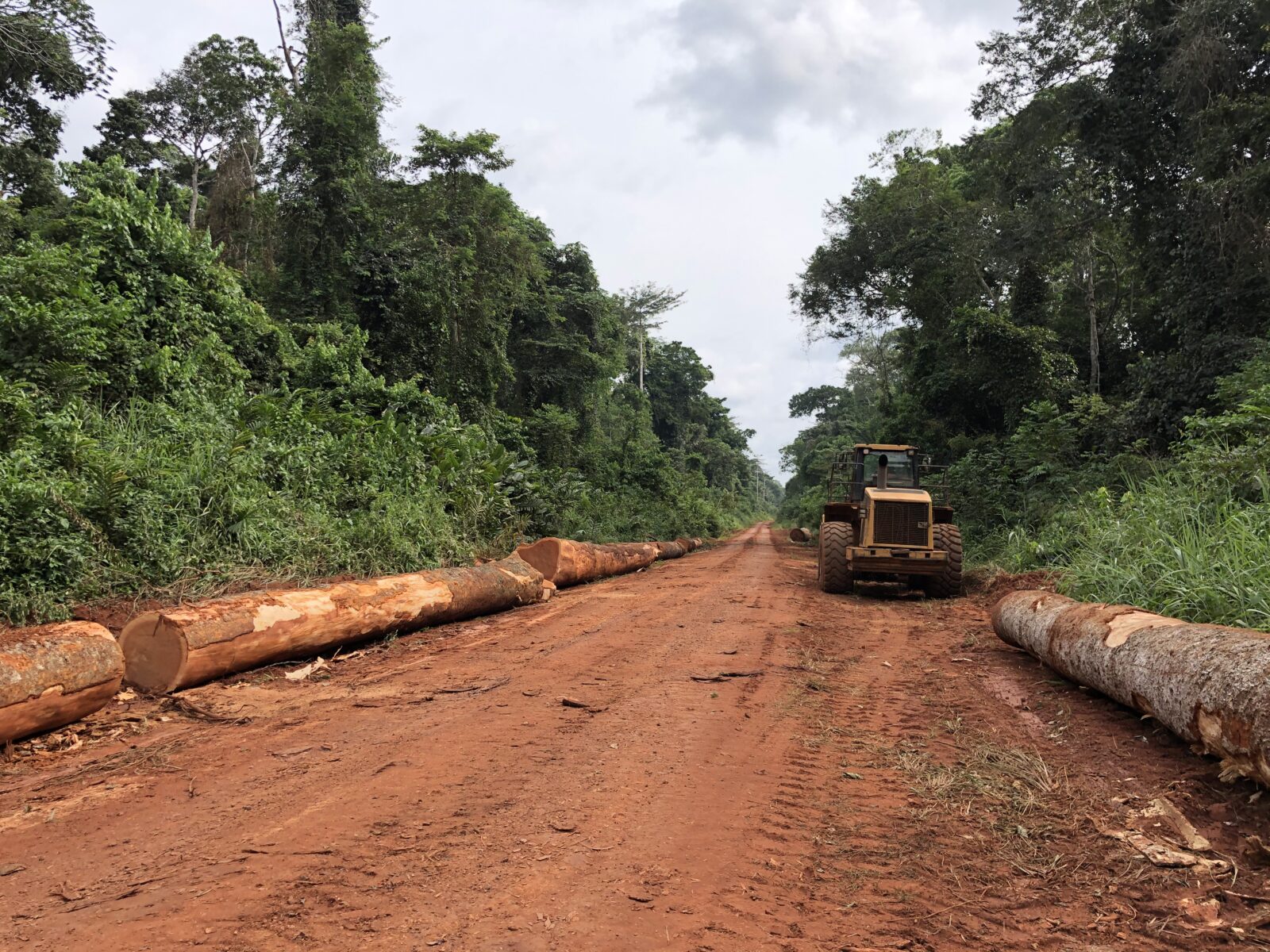
“People in Chicago should care about what’s happening in the Northern Republic of Congo in Ndoki because the tropical forests are essential to humanity,” said Morgan. “They’re the lungs of the earth. They provide health resources and food resources for around the world.”
Here at Lincoln Park Zoo, conservation efforts are always top of mind. Through zoo-funded research, the institution is able advance global conservation and pioneer new ways of helping ecosystems thrive in our increasingly urbanizing world. GTAP is one important piece in a network of conservation projects spanning six continents. The work can look very different from project to project, from tracking bat populations in Chicago to developing welfare indicators for less-understood species in zoos. Even in the Congo, there are different projects going on at any given time, like evaluating logging impacts and monitoring great ape behavior. But ultimately, these individual projects add up to one global effort to protect wildlife.
Benefitting Everyone
At Lincoln Park Zoo, our tagline is “For Wildlife. For All.” and this extends to our global research work. All zoo-backed projects strive to inspire communities to create environments where wildlife will thrive, just like GTAP is doing in the Congo. Over the course of 23 years, the project has created a multi-generational network of conservation advocates in the region through education, outreach, and employment. Lincoln Park Zoo scientists and Congolese researchers have built long-lasting relationships as they collaborate to protect the great apes and their home in the Nouabalé-Ndoki National Park.
“The more people become involved and start following [scientific] projects, the better off we’re going to be,” said Morgan.
